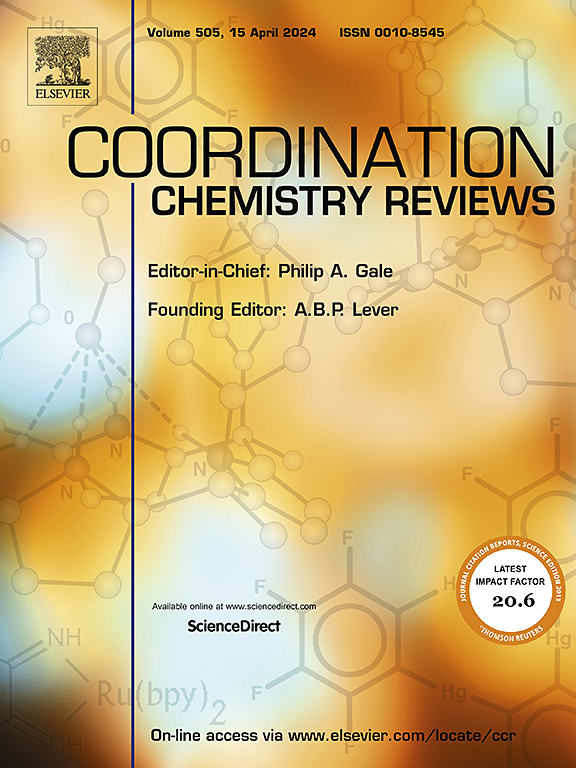电化学葡萄糖传感器的金属有机框架:进展与挑战
IF 23.5
1区 化学
Q1 CHEMISTRY, INORGANIC & NUCLEAR
引用次数: 0
摘要
开发高效、可靠、灵敏的葡萄糖传感器对于推进医学诊断和健康监测至关重要。金属有机框架(mof)具有高表面积、可调节孔隙度、可定制功能位点和催化性能等特点,是改善电化学葡萄糖传感器性能的有前途的材料。本文综述了基于mof的酶促和非酶促葡萄糖传感平台的最新进展。本文分析了mof在这些系统中提高传感器性能的机制,重点是它们在酶固定化、过氧化物酶样活性和葡萄糖氧化催化方面的能力。本文还综述了mof作为酶和其他电化学传感器固定基质的应用。此外,本文还讨论了与基于mof的传感技术相关的挑战,并探讨了其发展的潜在解决方案。本文章由计算机程序翻译,如有差异,请以英文原文为准。
Metal-organic frameworks for electrochemical glucose sensors: progress and challenges
The development of efficient, reliable, and sensitive glucose sensors is crucial for advancing medical diagnostics and health monitoring. Metal-organic frameworks (MOFs), characterized by high surface areas, tunable porosity, customizable functional sites, and catalytic properties, have emerged as promising materials for improving the performance of electrochemical glucose sensors. This review highlights recent progress in MOF-based platforms for both enzymatic and non-enzymatic glucose sensing. The mechanisms by which MOFs improve sensor performance in these systems are analyzed, focusing on their capabilities for enzyme immobilization, peroxidase-like activity, and catalysis in glucose oxidation. This review also examines the application of MOFs as immobilization matrices for enzymes and other electrochemical sensors. Additionally, the review addresses the challenges associated with MOF-based sensing technologies and explores potential solutions for their advancement.
求助全文
通过发布文献求助,成功后即可免费获取论文全文。
去求助
来源期刊

Coordination Chemistry Reviews
化学-无机化学与核化学
CiteScore
34.30
自引率
5.30%
发文量
457
审稿时长
54 days
期刊介绍:
Coordination Chemistry Reviews offers rapid publication of review articles on current and significant topics in coordination chemistry, encompassing organometallic, supramolecular, theoretical, and bioinorganic chemistry. It also covers catalysis, materials chemistry, and metal-organic frameworks from a coordination chemistry perspective. Reviews summarize recent developments or discuss specific techniques, welcoming contributions from both established and emerging researchers.
The journal releases special issues on timely subjects, including those featuring contributions from specific regions or conferences. Occasional full-length book articles are also featured. Additionally, special volumes cover annual reviews of main group chemistry, transition metal group chemistry, and organometallic chemistry. These comprehensive reviews are vital resources for those engaged in coordination chemistry, further establishing Coordination Chemistry Reviews as a hub for insightful surveys in inorganic and physical inorganic chemistry.
 求助内容:
求助内容: 应助结果提醒方式:
应助结果提醒方式:


